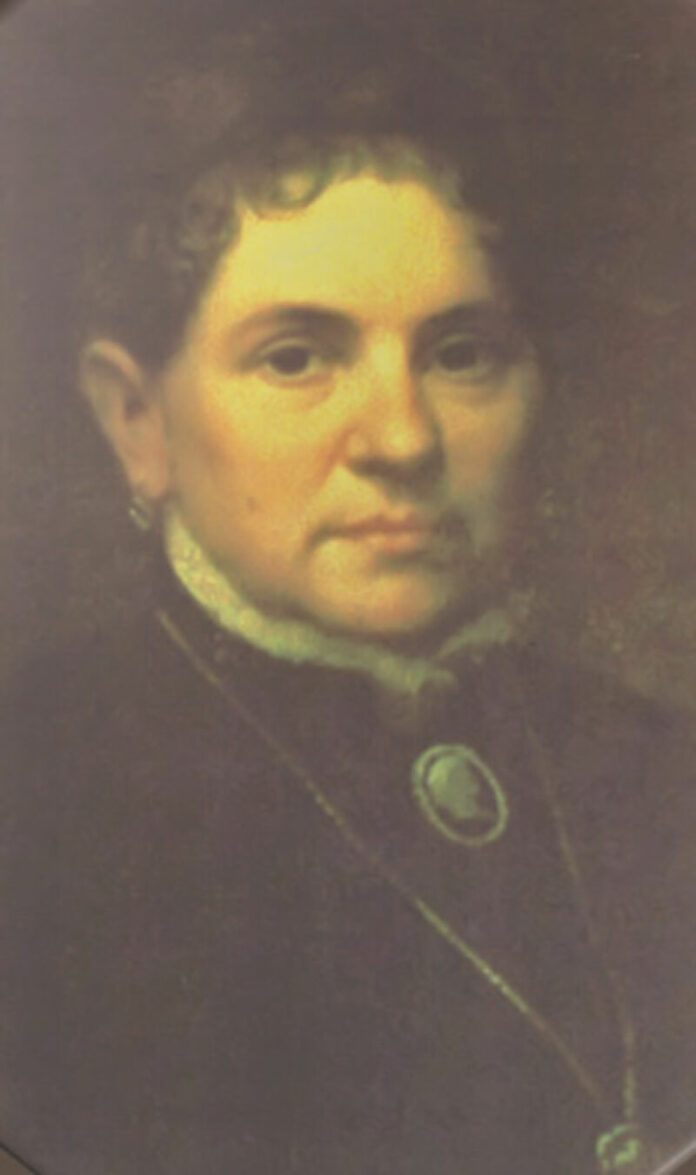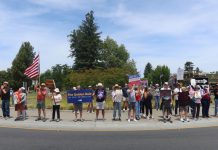In 2020 we celebrate the 100th anniversary of women’s suffrage in the United States. Shortly after the pandemic shut us down, Paula Freund and John Sheehy from the Petaluma Museum Association called with a question about the Latimer family. A researcher had discovered the name “Mrs. Judge Latimer” in the book, “History of Woman Suffrage” by Elizabeth Cady Stanton and asked if we were familiar with her.
Of course, we knew it was Sarah Myers Rich Latimer. This question led to an absolutely amazing story of local, state and national history. We thought we knew a lot about the life of Sarah Myers Rich Latimer but her involvement with the Woman Suffrage Movement was something no one had heard of before. We have a new exhibit dedicated to Sarah and some of her story is recounted in this newsletter, more will follow.
Women in the latter half of the 1800’s began a broad-based movement for economic and political equality, social reforms and sought to change the voting laws to allow them to vote.
With the 19th Amendment becoming law in 1920, women nationally were finally given the right to vote in all government elections, but the journey to secure this right had been a long and difficult one.
Windsor’s Sarah Rich Latimer played a pioneering role in this fight for equal rights in Sonoma County and the state. Sarah’s early years in the east and her association with the Swedenborgian Church in Portland, Maine, presumably led to her involvement in social matters. The church advocated reflection and responsibility on social issues, notably abolition, temperance and women’s rights. The church was among the first religious institutions to support co-education.
Upon Sarah’s move to the west and Sonoma County, she was identified in 1865 with the First New Jerusalem Church in San Francisco. This church was an offshoot of the Swedenborgian Church but more theologically conservative.
Sarah becomes a central figure in the suffrage movement in California
On Dec. 29, 1869, Sarah attended a meeting at the home of fellow Swedenborgian Abigail Haskell in Petaluma to organize the Sonoma County Woman Suffrage Association. That same year, Sarah became an officer, or Worthy Vice Templar, of the International Order of Good Templars, a national temperance organization promoting abstinence.
The temperance movement greatly influenced male voters to reject the suffrage effort. Men worried that women voters would vote for temperance and the ban of alcohol. In late January of 1870, she accompanied Haskell to the inaugural convention of the California Woman Suffrage Association (CWSA) in San Francisco, where Haskell was elected president and Sarah one of eleven vice presidents representing Sonoma County.
In May of 1872, Sarah was elected school trustee in the Hill School District, but was unable to vote in that election or any other election.
The news of Sarah’s election also appeared in the Weekly Colusa, the Trinity Journal and the San Jose Mercury-News.
The Russian River Flag also re- ported the story in May under the heading, “Woman’s Rights” and included that “Mrs. Latimer is an intelligent lady, a regular reader of the Flag, and will doubtless honor the position to which she has been elected.”
On June 13 the Russian River Flag followed up with a short notice that Mrs. Latimer “has qualified and entered upon the duties of her office.” On July 18 the same newspaper includes a question, “If women are eligible to office, are they not entitled to vote?” This same question is asked in the Red Bluff Independent on July 13 under the heading, “New Kind of Trustee.”
First Woman
Sarah was the first woman elected to a public office in California. It was not until the legislative session of 1873-74 that a bill was passed by the California legislature that made women eligible to hold school offices. It is not known how long she remained as a trustee of the school district but she no doubt remained an important voice for woman’s rights.
In 1872, Sarah again served as a vice president of the CWSA, a position she held through at least 1874.
Sarah died in 1904, seven years before California women won the right to vote in their state.
The Woman Suffrage Amendment was first introduced in the United States Congress in 1878. The wording was unchanged in 1919, when the 19th Amendment finally passed both houses and became law in 1920.
California women, with exceptions, won the right to vote in 1911. This right was not given to natives of China, or persons unable to read the constitution in English or write their name.
Footnote to the election of 1911
The Woman’s Suffrage amendment election of 1911 was extremely close. So close that newspapers declared it defeated the morning after but as election returns continued to come in from the “back-county vote” the outcome changed. The amendment was defeated by the major urban areas and carried in the more rural precincts. The amendment was carried in Sonoma County by 186 votes, 2,465 in favor and 2,279 opposed. In Windsor the amendment was defeated with 82 no votes to 53 yes votes. In Healdsburg, it was defeated with 191 no votes and 173 yes votes. Out of 244,487 votes cast, the amendment passed by only 3,487 an average of one vote per precinct.
Steve Lehmann is the president of the Windsor Museum and Historical Society.









